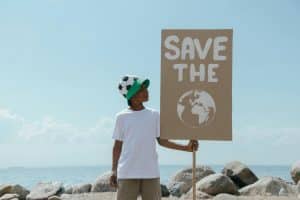Disasters on opposite sides of the globe
In recent weeks, the world has witnessed two stark examples of how natural disasters are not only becoming more intense but also more frequent. On October 28, 2025, Hurricane Melissa made landfall in Jamaica as a devastating Category 5 storm, with sustained winds estimated at 185 mph (295 km/h), tearing through the island’s southwest. Floodwaters swept across communities, roofs were torn from buildings, and landslides blocked roads. Officials have described the event in unprecedented terms; there is no infrastructure in the region that can withstand a storm of that strength (UN, 2025).
Meanwhile, in the Philippines, severe flooding and intense monsoon rains—supercharged by back-to-back tropical storms—have caused widespread devastation. The latest reports indicate dozens of fatalities and thousands displaced as entire neighbourhoods were inundated (The Guardian, 2025). Climate scientists warn that the Philippines’ recent typhoon seasons have been “supercharged” by global warming, with warmer ocean temperatures fueling more energy into tropical systems (Carbon Brief, 2024).

Source: Pexels
Rainfall volumes in the region have also increased. Meteorological analyses show that atmospheric moisture flows over the Philippines have grown by nearly 8% since the early 1990s, contributing to heavier and longer-lasting rain events (UN, 2025). Despite hundreds of flood-control projects, infrastructure often struggles to handle the new extremes (Gulf News, 2025).
a global trend we don’t want to follow
What connects these two disasters is a broader global trend: the frequency and severity of extreme weather events are rising. According to the World Meteorological Organization, floods remain the most common weather-related natural disaster, and the number of flood events has climbed sharply over the past two decades (NOAA NESDIS, 2024). The Philippines, in fact, has once again topped the Global Disaster Risk Index, underlining how certain nations face both high hazard exposure and limited adaptive capacity (UNFPA, 2025).
For THRIVE Project, this underscores a vital message: resilience and preparedness must evolve alongside the changing climate. With both Jamaica and the Philippines showing how quickly conditions can escalate—winds turning catastrophic, rains becoming deluges—it is essential to invest in early-warning systems, climate-adaptive infrastructure, and social systems that can absorb shocks. These topics further highlight how a hollistic approach is a necessity. Read about the THRIVE Framework and sign up to our live Webinars to learn more.
If disasters were once rare, we now live in an age when they are almost expected. Preparing for that reality is not optional—it is survival.
Read more of our articles on climate change and adaptation.
Why trust us?
At THRIVE Project, we’re all about facts that matter—and a future that flourishes. Our team of researchers, writers, and thrivability experts dig deep into the science so you don’t have to. Everything we publish is based on credible sources, double-checked for accuracy, and written with one goal in mind: helping you make sense of the world and how to improve it. We’re independent, non-profit, and here to spark real change with knowledge you can count on. Find out more about our team.
– THRIVE Project























